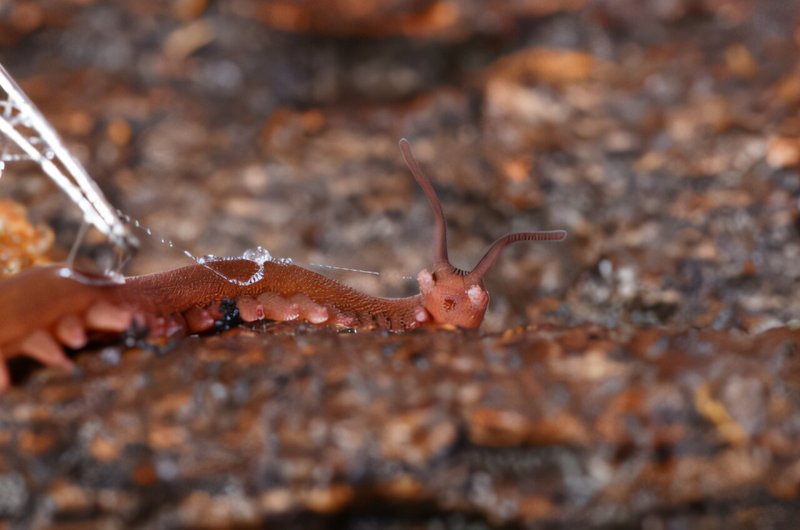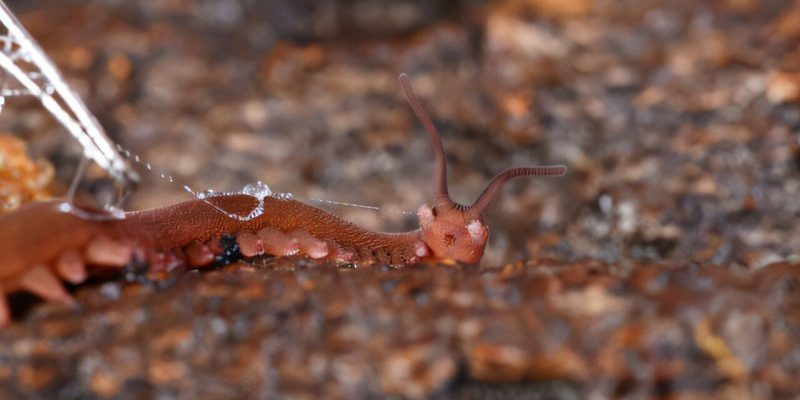
Velvet worms, or *Onychophorans*, are more than just a quirky addition to your nature documentary binge-watching. Their slime has a variety of ecological functions that can impact their environment and the species around them. So, grab a comfy seat, and let’s dive into the world of these fascinating creatures and find out why their slime is so important to our ecosystems.
What Are Velvet Worms?
Before we dive into the slime, let’s talk a bit about what velvet worms actually are. These fascinating creatures belong to a group called *Onychophora*. They have soft, segmented bodies covered in a velvety texture, giving them a unique appearance. Think of them as a mix between a caterpillar and a slug. They tend to live in damp, forested areas and can often be found lurking under leaves or in rotting wood.
Velvet worms are nocturnal hunters, which means they come out at night to look for food. Their diet mainly consists of insects, which they capture using their amazing slime. This is where their ecological role starts to come into play. By preying on insects, velvet worms help control insect populations and contribute to the balance of their ecosystems.
The Creation of Velvet Worm Slime
So, how do these little guys produce their remarkable slime? Well, it all starts in their slime glands, which are located near their mouths. When they’re ready to hunt, they can shoot out this sticky substance with impressive speed—sometimes up to several centimeters! It works almost like a sticky trap that captures unsuspecting prey.
The composition of the slime is quite fascinating, too. It consists of proteins and polysaccharides, which give it its sticky nature. When the slime hits its target, it quickly becomes thicker and harder, making it extremely effective for capturing insects. You might imagine it like a spider web, but much stickier! This ability not only aids in hunting but also acts as a defense mechanism against predators.
Ecological Roles of Velvet Worm Slime
Now that we know how the slime is created let’s explore its ecological roles. Velvet worm slime serves multiple purposes that can significantly affect their habitats. Here’s a breakdown:
- Prey Capture: The primary function of the slime is to capture prey. By effectively ensnaring insects, velvet worms contribute to controlling the population of these organisms. This is vital in maintaining the balance of the ecosystem.
- Soil Enrichment: When these worms hunt and consume insects, they contribute to nutrient cycling in the soil. Their waste can help add organic matter, enriching the ecosystem.
- Habitat Creation: By preying on certain species, velvet worms may indirectly promote biodiversity. A more balanced insect population allows other creatures to thrive, contributing to a richer ecosystem.
These roles underscore the importance of these seemingly simple creatures in the grand tapestry of life.
How Velvet Worms Impact Biodiversity
You might be wondering, how exactly do velvet worms impact biodiversity? The answer lies in their hunting habits and the way they interact with other species in their environment. By controlling insect populations, velvet worms create opportunities for other organisms to flourish.
For example, if velvet worms were to disappear, we could see a surge in certain insect populations. This can lead to overgrazing of plants, which would in turn affect herbivores and the entire food web. In essence, velvet worms are crucial players in maintaining the delicate balance of their ecosystems.
Furthermore, their slime might also support various microorganisms. While we often think of slime as something unsavory, in the case of velvet worms, it can provide a microhabitat for beneficial bacteria and fungi. These microorganisms play essential roles in nutrient cycles and soil health, further enhancing biodiversity.
The Use of Velvet Worm Slime in Science
Interestingly, velvet worm slime has attracted attention beyond ecological significance—it’s making waves in the scientific community, too. Researchers are studying the properties of this slime for various applications, especially in fields like medicine and material science.
The unique composition of the slime has potential uses, such as developing new adhesives or even wound dressings. It’s fascinating to think that something as simple as a worm’s slime could pave the way for innovative technologies. This is a perfect example of how ecology and technology can intersect, opening doors for exploration and discovery.
Conservation and the Future of Velvet Worms
As with many creatures, habitat loss poses a significant threat to velvet worms. Deforestation and urbanization are leading to declines in their populations, which could cascade through ecosystems due to their ecological roles. It’s essential to consider how our actions impact these critical organisms.
Conservation efforts are crucial to ensure that velvet worms and their slime continue to play their roles in the ecosystem. Supporting sustainable practices and habitat conservation can help maintain the delicate balance in ecosystems where velvet worms thrive. Remember, when we protect these small creatures, we also protect the biodiversity that relies on them.
Velvet worms may not be the most glamorous creatures in the animal kingdom, but their ecological significance is undeniable. From their unique slime production to their role in maintaining biodiversity, velvet worms are small but mighty. Their interactions within ecosystems and potential applications in science showcase the interconnectedness of life and the importance of every species.
So, the next time you hear about velvet worms or their slime, remember their contribution to the world around us. Understanding these connections can inspire us to appreciate and protect the intricate web of life we share. Let’s keep the conversation going and advocate for the conservation of all creatures, no matter how small!

